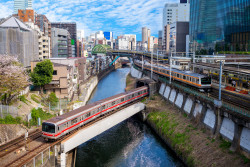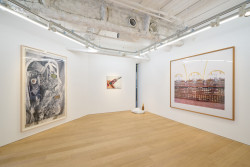
November 4, 2010
The Butterfly in the Metro
It’s a delicate balance that makes Tokyo so livable
By Metropolis
Originally published on metropolis.co.jp on November 2010

Illustration by Eparama Tuibenau
What makes a city desirable? After living in Tokyo for just two years, I realize that what passes as normal in a large US city now seems peculiar, unnecessary and even unpleasant.
Case in point: while waiting for a bus in Manhattan this summer, my mother reminded me that I’d need the exact fare.
“Of course, I have a few dollars in my pocket.”
“No, no,” she says. “You need $2.25 in coins.”
Exact fare means nine quarters, or more coins if you’re using dimes and nickels. New York City bus drivers neither make change nor accept bills.
In Tokyo, people often ask whether I came here for work. At first, my impulse was to explain the specific motivations that led me here. Later, I learned it was simpler to smile and say “Yes.” But the actual reason I am in Tokyo is because I enjoy living here. What attracts me is the mix of infrastructure and culture, the built environment and the people, that can be found in few, if any, other dense urban areas.
Walking and taking transit in US cities, you soon realize that the world’s wealthiest country places little value on what is public, free and shared. Subway restrooms have been closed, ostensibly to prevent terrorism but more likely to save money.
The long recession has prompted cash-strapped governments to cut back on the most basic public services. The state of Hawaii reduced its school year, and Colorado Springs turned off a third of its streetlights. In nearly every city and town, already inadequate public transit systems have undergone service reductions and fare increases.
Japanese stare in disbelief when I explain that the San Francisco bus and subway system has no schedule. Trains are supposed to arrive in 10-, 15-, or 20-minute intervals depending on the time of day. No explanation is given when they don’t appear. It’s also unremarkable to wait 30 minutes and then see three buses arrive in a convoy.
By contrast, Tokyo really does earn its reputation as a transit paradise. Watching parents take off toddlers’ shoes before letting them stand on seats makes me feel like I’ve come from a different planet. Equally eye-opening are the elementary school students traveling alone, or the adults soundly sleeping with briefcases and valuables perched on racks high above them.
Clean and safe public spaces in Tokyo reflect and reinforce a level of social harmony and respect for others that are startling to Americans and Europeans. When you’re not worried about dangerous neighborhoods and personal safety, you’re free to wander and explore your surroundings anywhere and anytime. Traveling by foot offers a human scale and social interaction lacking in places where cars are the primary mode of transit.
At least until recently, Americans were proud of their high standard of living, their new cars and their McMansions. For me, true luxury is the ability to circulate in a crowded city with ease and lack of fear. I am happy to live in a typically small Tokyo apartment when I have such easy access to a city that continually surprises and enchants me.
Last week, on my way into the nearby Tokyo Metro station, I saw a uniformed agent racing up the stairs. Who or what was he chasing? I felt the adrenaline rush of fear and anxiety that once seemed normal in the US but, looking closely, I saw that he held in his hand a butterfly. As he descended back to his underground office, he blushed when I remarked on his care for this winged insect.
Living in dense cities, many Japanese are unaware of the uniquely rich qualities of their shared spaces and urban life. Many assume that life must be better abroad. I feel fortunate to be here.







